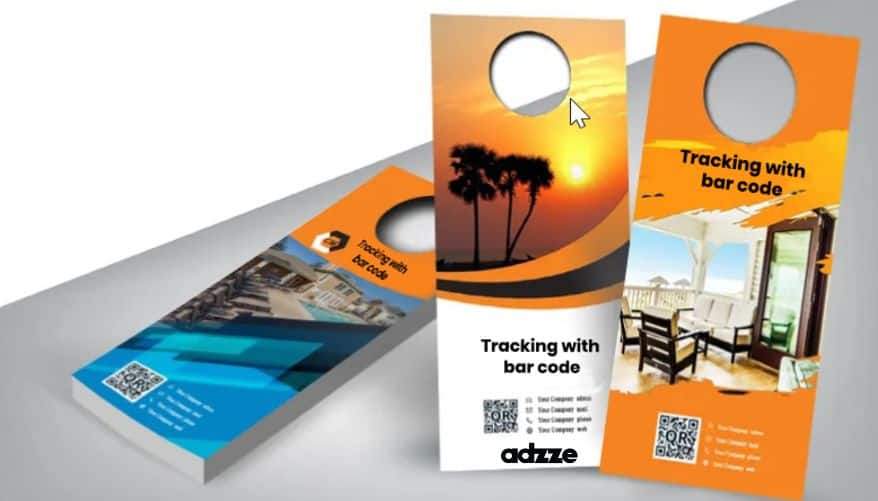Door Hanging Advertising and the Rise of Hyperlocal Precision
In an era dominated by digital noise and ad blindness, Door Hanging Advertising is quietly reclaiming ground in the attention economy—especially when combined with modern targeting tactics like geo-behavior mapping. While many marketers still think of Door Hanging ads as a static, old-school tactic, the smartest brands are now transforming this analog channel into a hyperlocal performance driver.
For marketers in healthcare, legal, insurance, and even cannabis-related verticals, the ability to meet a prospect at their literal doorstep—armed with postal-level targeting intelligence—unlocks new territory for tactile, trust-building campaigns.
Why Door Hanging Advertising Still Works (When Done Strategically)
Let’s be honest—Door Hanging advertising had fallen out of fashion in the digital age. But with increasing privacy concerns, rising digital CPMs, and consumer fatigue with screens, this physical format is finding new relevance. Here’s why it still earns a place in smart media mixes:
Tactile = Memorable
A Door Hanging ad is held, read, and often kept—especially when it offers value or personalization. Unlike digital, there’s no “skip” button.
Zero Ad Fraud, Full Control
With Door Hanging advertisement, you can verify the drop location and bypass issues like fake views or bot clicks that plague online platforms.
High Visibility
It’s one of the few formats that physically blocks the user’s path. It must be moved or removed, guaranteeing at least one interaction.
Geo-Behavior Mapping: From ZIP Codes to Micro-Intent
To maximize the ROI of Door Hanging ads, brands are now layering in geo-behavior mapping—the practice of aligning creative, language, and call-to-action with the hyperlocal behavioral trends of a community.
What Is Geo-Behavior Mapping?
It’s the blend of postal-level targeting and local lifestyle insights. By using demographic, psychographic, and behavioral data linked to neighborhoods, marketers can craft Door Hanging advertising that feels relevant and responds to context.
Why It Matters
Let’s compare two ZIP codes:
12345: Dominated by retirees and low vehicle ownership
54321: Young professionals, high Amazon delivery volume, gym-centric lifestyle
Using the same Door Hanging ad for both? That’s wasted budget.
Door Hanging Ads Aligned with Local Behavior: Examples That Work
Here’s how brands can align Door Hanging advertisements with real-world micro-moments:
Healthcare Clinics Targeting Wellness Lifestyles
Location Insight: High foot traffic near parks, health food stores, and yoga studios
Ad Tactic:
Place Door Hanging ads with messaging like “Your Annual Checkup is Closer Than You Think,” featuring QR scheduling for local walk-in clinics.
Insurance Campaigns in Storm-Prone ZIPs
Location Insight: Recent storm warnings, flood-prone areas
Ad Tactic:
Use Door Hanging advertising to deliver flood preparedness tips and a quote estimate QR code—triggering moment-of-need responses.
Legal Campaigns Near Courthouses or Correctional Facilities
Location Insight: ZIP codes with high court interaction rates
Ad Tactic:
Door Hanging ads can present legal service value with plain-language CTA: “Legal Help Starts Here. No Fee Unless We Win.” That builds trust and drives inbound.
Cannabis or CBD Dispensaries Near Pharmacies
Location Insight: Areas with high footfall near medical buildings or health-focused retailers
Ad Tactic:
Create Door Hanging advertisements designed as wellness education inserts, reinforcing CBD’s legitimacy. This bridges the healthcare crossover point tactfully and compliantly.
Tactile Meets Trackable: QR Codes Close the Loop
Critics often argue that Door Hanging ads aren’t measurable. That’s no longer true. Modern campaigns embed QR codes or short URLs to track:
Scans by ZIP
Click-through by message type
Engagement time from physical touch to digital visit
This hybrid model blends the trust and attention of tactile media with the attribution and analytics of digital platforms.
Designing Door Hanging Advertising for Geo-Behavior Wins
It’s not just where you place it—it’s how it’s crafted.
Creative Tips:
Reflect local lingo (e.g., “y’all,” “Metro riders,” “snowbirds”)
Reference local events or pain points






